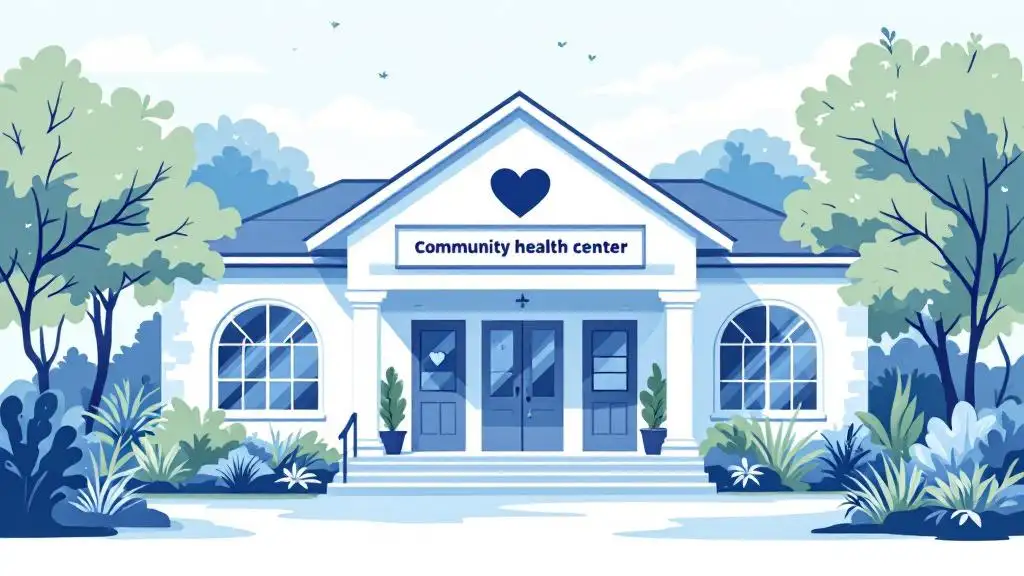How NHTD Provides a Path to Independent Living
Empowering Independence: The Role of NHTD in Community Living

Introduction to the NHTD Program
The Nursing Home Transition and Diversion (NHTD) Waiver Program is a vital initiative by New York State Medicaid designed to foster independent, community-based living for seniors and individuals with disabilities. By offering comprehensive, personalized support, NHTD helps eligible participants transition from institutional settings such as nursing homes into safe, accessible, and supportive home environments. This article explores how the program facilitates independent living, its eligibility criteria, the services it provides, and how it promotes community integration.
Understanding the NHTD Waiver Program
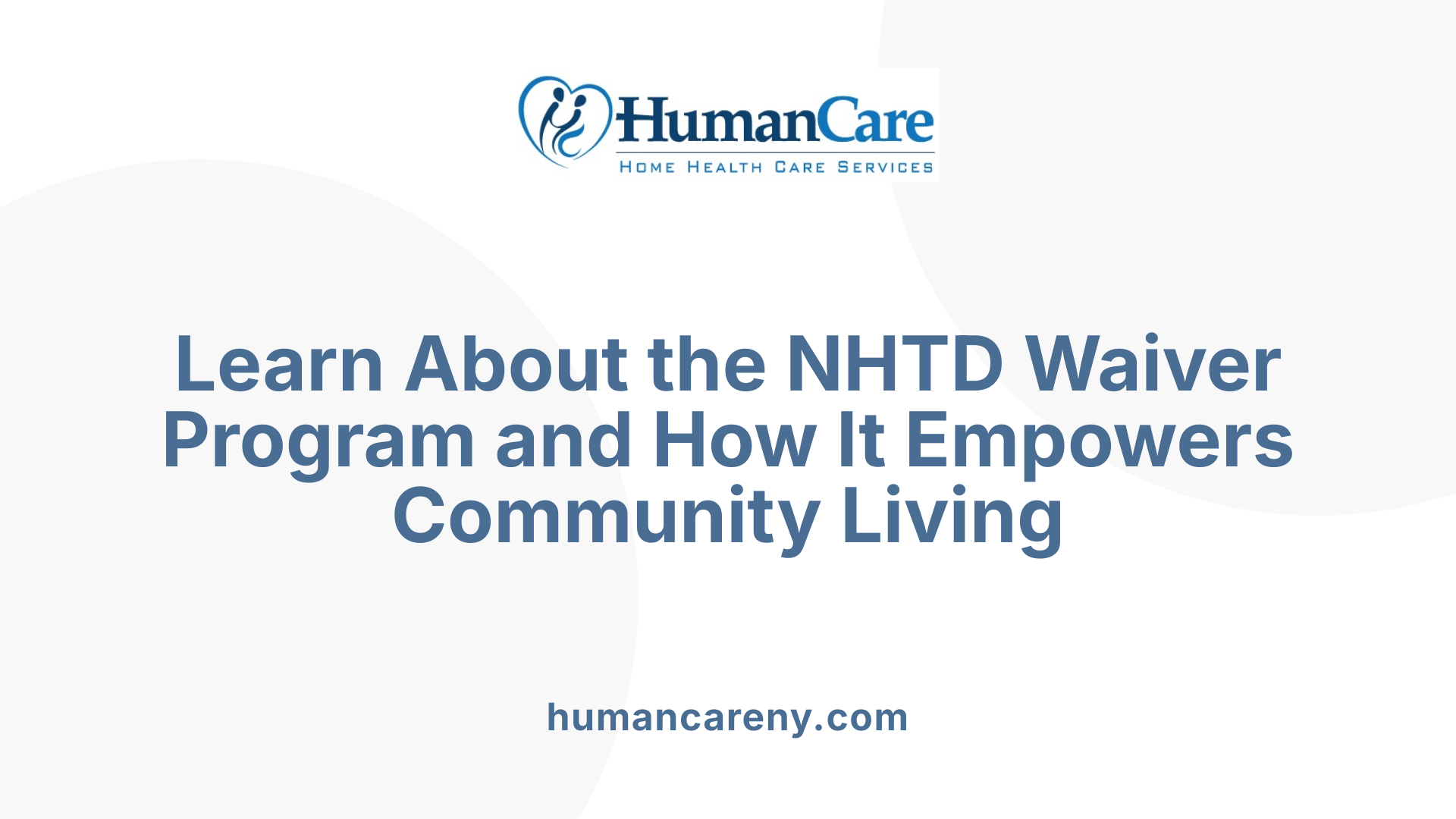
What is the NHTD Waiver Program?
The NHTD (Nursing Home Transition and Diversion) Waiver Program is a specialized Medicaid initiative aimed at helping people with disabilities and seniors live independently in their communities instead of in nursing homes or other institutional care facilities. This program offers a broad spectrum of personalized services and supports designed to meet each individual’s unique needs, preferences, and goals.
Participants in the NHTD Waiver can access a wide range of services, including service coordination, home modifications, assistive technology, environmental adaptations, and various community support services. These services are meant to remove barriers to community living and enable individuals to maintain their independence.
To qualify for the program, individuals must be eligible for Medicaid, be physically disabled or aging 65 or older, and assessed as needing nursing home level care. They also need to be capable of living safely in the community with appropriate support.
An essential feature of the NHTD Waiver is the active involvement of participants in their own care planning. They work with care coordinators to develop Service Plans tailored to their needs, aspirations, and lifestyles. This person-centered approach ensures that services align with personal goals and promote autonomy.
Overall, the program provides a pathway for individuals to remain in their homes, uphold their dignity, and exercise their right to community participation. It aims to improve quality of life, foster independence, and reduce reliance on costly institutional care, all while supporting the values of choice and self-determination.
Goals of the program in promoting independence
The primary goal of the NHTD Waiver Program is to enhance the independence of participants by providing services that support them in living their lives as freely and fully as possible. It emphasizes person-centered care, where each individual actively participates in designing their care plan, ensuring the services are relevant and respectful of their preferences.
Services such as home modifications and assistive technology are designed to facilitate daily activities, increase safety, and promote self-sufficiency. Community support services, including peer mentoring, structured day programs, and community integration counseling, serve to reduce social isolation and foster community engagement.
Additionally, the program seeks to eliminate or reduce barriers to community living through environmental modifications and home-based supports, making residences safer and more accessible.
Another aim is to enhance overall well-being by offering supportive services like nutritional counseling, respiratory therapy, and wellness activities that maintain health and promote a high quality of life.
By focusing on independence, the NHTD Waiver also aligns with broader state initiatives like the Olmstead Plan, which advocates for integrated community living for all individuals. The program thus plays a vital role in enabling aging in place and supporting individuals to lead lives with dignity, autonomy, and community involvement.
Eligibility and Approval Process

Who is eligible for the NHTD program?
The NHTD (Nursing Home Transition and Diversion) Medicaid Waiver Program is designed for a specific group of individuals who require support to live independently in the community. To qualify, applicants must meet several criteria.
First, they need to be residents of New York State and at least 18 years old. For younger adults, the program primarily supports those with disabilities or chronic illnesses. For seniors, the eligibility extends to individuals aged 65 or older. All applicants must be enrolled in Medicaid, which is essential for accessing the program’s services.
Another critical requirement is the need for nursing home level of care. This means the individual’s medical and support needs are comparable to those of someone in a nursing facility, but they are capable of receiving care outside an institutional setting with assistance.
Applicants must also demonstrate a physical or developmental disability if they are between 18 and 64. For older adults, cognitive or physical impairments that necessitate daily support may qualify them.
It is also necessary that applicants are eligible for community-based long-term care services under Medicaid and live in or agree to establish a suitable living environment that supports independence. Importantly, individuals who participate in another Home and Community-Based Services (HCBS) waiver are generally not eligible for the NHTD program, to prevent overlapping services.
Steps to apply and get approved
The process to enroll in the NHTD Program involves multiple steps designed to ensure each participant receives appropriate support tailored to their needs.
Initially, interested individuals or their family members should contact an authorized agency or Medicaid service coordinator. These coordinators are responsible for guiding applicants through the application process.
The next step involves undergoing a thorough assessment. This assessment, performed by qualified personnel, evaluates the individual’s medical condition, functional status, support needs, and living circumstances.
Applicants are required to submit a comprehensive application that includes medical documentation, proof of Medicaid enrollment, identification, and evidence of disability, if applicable. Supporting documents help verify the eligibility criteria.
Following submission, the application undergoes review, which may include background checks and compliance verifications. During this phase, agencies verify that the applicant’s needs align with the services provided under the waiver.
Once approved, the person collaborates with the service coordinator to develop an individualized service plan. This plan outlines the specific services, supports, and interventions necessary to promote independent living.
Ongoing monitoring ensures that the services remain appropriate and effective, with adjustments made as the individual’s needs evolve. The entire process is designed to facilitate a smooth transition from institutional care to community living, prioritizing safety, dignity, and personal preference.
For more detailed guidance, individuals can search for “Eligibility and application process for NHTD” to access specific resources and assistance programs that support enrollment and care planning.
Core Services Supporting Community Living
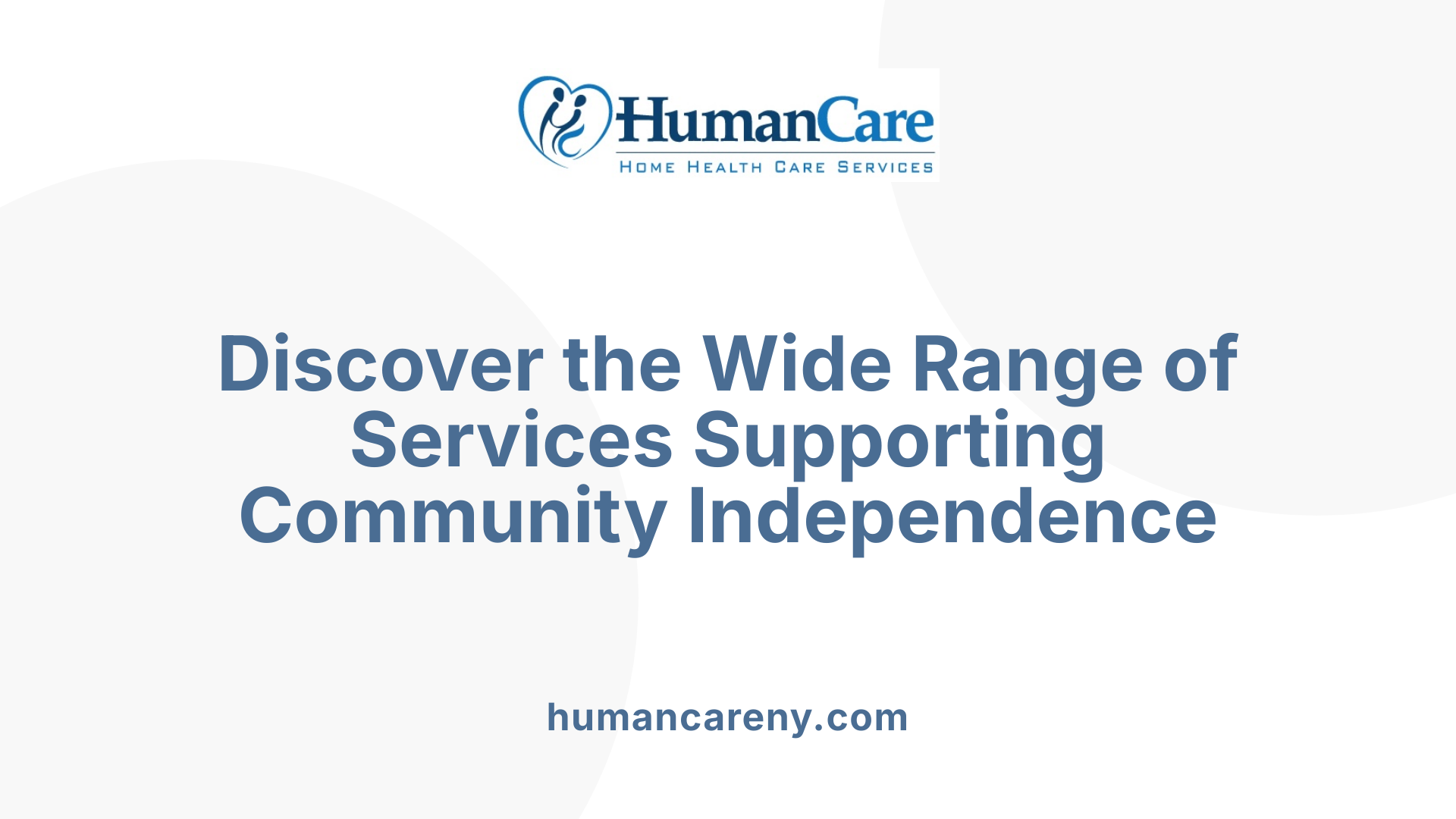
What services and supports does the NHTD program offer to promote community living?
The NHTD (Nursing Home Transition and Diversion) Medicaid Waiver Program provides a diverse array of services aimed at helping individuals with disabilities and seniors live independently within their communities instead of institutional settings like nursing homes.
Among the core services are personalized care planning and service coordination. These help each individual develop a tailored plan that aligns with their specific needs, preferences, and goals. Service coordinators work closely with participants to ensure they access the right supports and resources.
The program offers a variety of home and community-based services, including assistance with daily activities such as bathing, grooming, and meal preparation. Medical services like nursing care, therapies, nutritional counseling, and respiratory therapy ensure health needs are met at home.
Assistive technology and environmental modifications are also provided to enhance safety and independence. This might involve installing ramps, grab bars, or specialized equipment that support mobility and safety.
Community integration counseling and structured day programs encourage social engagement and participation in community life. Peer mentoring and wellness counseling further bolster confidence and emotional well-being.
To support transitions from nursing homes, the program includes community transitional services such as moving assistance, home modification, and community placement planning. This helps ensure a smooth process as individuals shift from institutional to community-based living.
The services are delivered in settings that uphold the rights, dignity, and full community access for participants, aligning with federal and state HCBS regulations. Providers of these services are required to meet specific qualifications and participate in ongoing training to maintain high standards.
Safety and quality assurance are fundamental aspects, with incident reporting, complaint procedures, and regular program monitoring to protect participant health and safety.
How do these services promote independence?
These supports empower individuals to manage their daily lives effectively and maintain control over their care decisions. Personalized service plans reflect each person's preferences, fostering a sense of autonomy.
Environmental modifications and assistive technology remove physical barriers, allowing greater mobility and safety within the home. Structured day programs and community integration activities help build skills and reduce social isolation.
By providing comprehensive medical and therapeutic care at home, the services reduce the need for hospitalization or institutionalization.
Overall, the NHTD program's services facilitate a person-centered approach that emphasizes independence, social participation, and overall improvement in quality of life. This enables individuals to live with dignity and as much autonomy as possible within their communities.
Facilitating Transitions from Institutions to Communities
How does the NHTD program support individuals in transitioning from institutional care to independent, community-based living?
The NHTD (Nursing Home Transition and Diversion) Waiver Program plays a crucial role in helping individuals move from nursing homes or other institutional settings back into their own homes or community living environments. This support starts with thorough assessments where service coordinators evaluate each person's needs, preferences, and safety considerations. Based on these assessments, a personalized care plan is developed, emphasizing the person's goals and desired level of independence.
A wide array of services is provided to facilitate this transition, including environmental modifications like home adjustments for safety and accessibility, assistive technology to support daily activities, and home and community support services such as personal care, medical supplies, and therapeutic interventions. These services are flexible and tailored for each individual, enabling them to live safely and comfortably outside of institutions.
The program also offers independent living skills training, which helps individuals develop or regain skills necessary for managing daily tasks and maintaining independence. These might include assistance with activities of daily living, medication management, and mobility.
Transition support is ongoing, with continuous monitoring and adjustments to the care plan as needed. This ensures that participants remain safe and supported in their new environments. Participants are actively involved in decision-making through person-centered planning, which respects their preferences and choices. The program's support extends to coordinating services across different providers and ensuring continuity of care.
Moreover, by empowering individuals through choice and personalized services, the NHTD program fosters a sense of control over their own lives. This person-centered approach not only improves quality of life but also helps reduce unnecessary reliance on institutional long-term care.
Overall, the NHTD program’s comprehensive support system enables a smooth, safe, and empowering transition from institutional settings to community living, promoting independence, dignity, and community inclusion.
Person-centered planning and empowerment
A cornerstone of the NHTD program is its emphasis on person-centered planning. This approach involves actively engaging the individual in developing their service plan, ensuring their personal preferences, goals, and needs are at the forefront.
Participants are encouraged to express their choices about where they want to live, the types of services they prefer, and the support providers they wish to work with. This empowerment fosters a sense of control and dignity, making the transition more meaningful and aligned with their life goals.
Service coordinators serve as advocates, helping individuals navigate available options and understand their rights. They facilitate access to diverse services such as community integration counseling, peer mentoring, and assisted technology, all aimed at enhancing independence.
This person-centered process ensures that service delivery respects the rights, autonomy, and dignity of each person. It also promotes community engagement, enabling individuals to participate actively in local activities, maintain social connections, and enjoy a higher quality of life.
In summary, the NHTD program not only provides practical support for transitioning but also champions the individual's right to make choices about their care and living arrangements. This approach leads to more personalized, effective, and empowering services that support long-term independence and community integration.
Program Features, Policies, and Long-Term Benefits
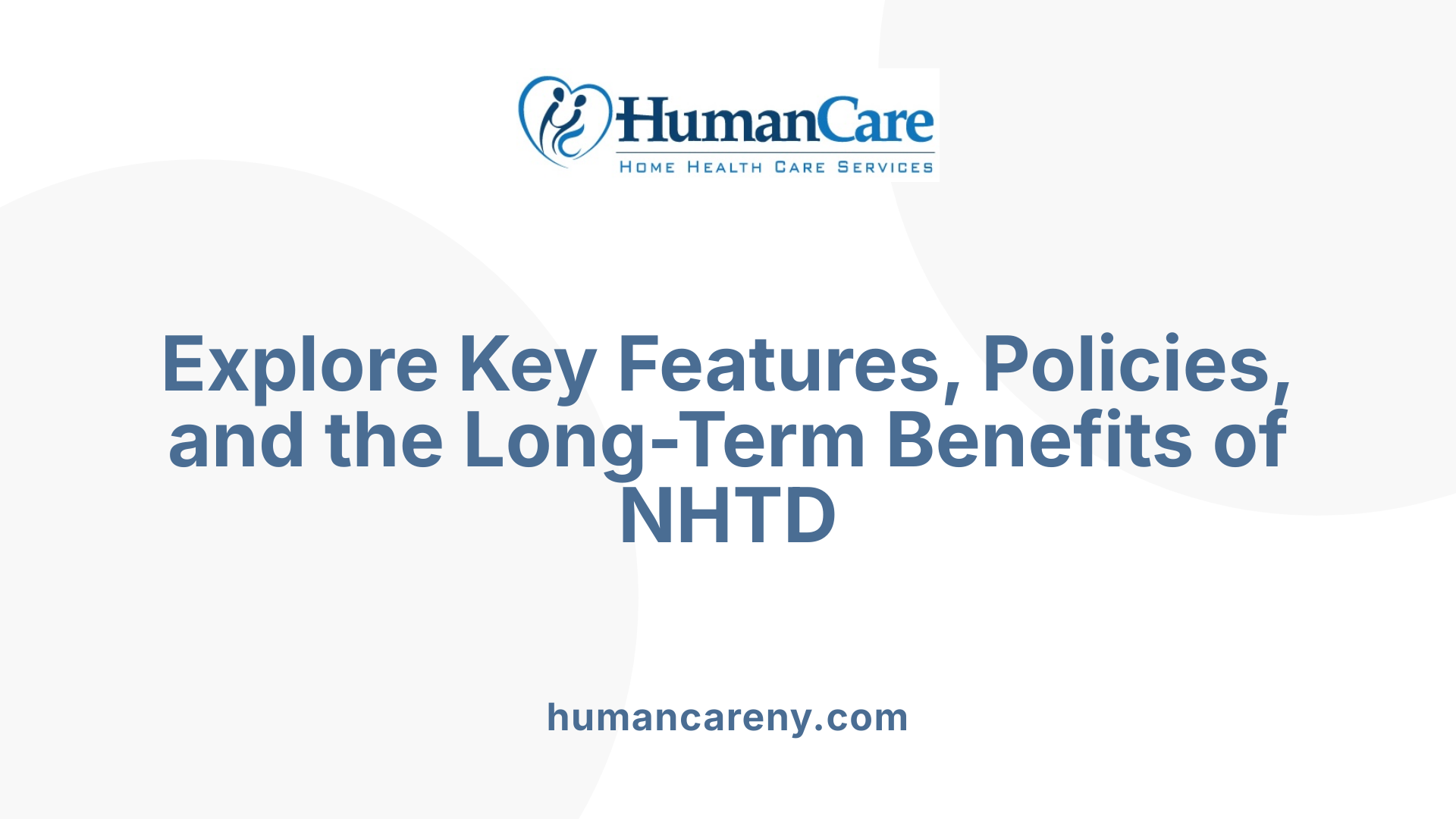
What are the key features and policies of the NHTD program that enable independent living?
The NHTD (Nursing Home Transition and Diversion) program is designed to promote independence among seniors and individuals with disabilities by providing personalized, community-focused services. Central to its approach are policies that prioritize individual choice, empowering participants to live in settings that best suit their needs and preferences.
A major feature of the program is personalized service planning. Each participant works with a service coordinator to develop a tailored plan that includes necessary supports and services. This person-centered approach ensures that services align with the individual's goals, whether that involves living at home, making environmental modifications, or accessing assistive technology.
The program also emphasizes support for community integration. It offers community transition services to help smoothly transition individuals from institutional settings to their homes. Services such as home modifications and assistive technology help remove physical and technological barriers, enhancing safety and independence.
In terms of policies, the NHTD program enforces strict standards for service provision. This includes ensuring qualified providers are delivering high-quality, person-centered care. Providers must meet specific training and credentialing requirements.
The program’s oversight mechanisms include structured incident reporting, complaint procedures, and ongoing monitoring—key components that uphold safety, quality, and adherence to federal and state regulations.
Eligibility policies further support independence by ensuring supports are tailored to those who genuinely need them. Participants are carefully assessed to confirm they require nursing-home level care but can thrive with community-based services.
Overall, these combination of flexible policies and personalized services fosters an environment where participants can live more independently, with dignity and control over their lives.
How does the NHTD program support individuals with disabilities or chronic illnesses in living independently?
The NHTD program offers a comprehensive suite of support services aimed at enabling individuals with disabilities or chronic illnesses to manage daily life and remain in their communities. These supports are designed to address both medical and social needs, promoting autonomy and engagement.
Among the core services are care management and service coordination, where dedicated coordinators help develop personalized care plans and connect individuals with appropriate resources. This planning often includes assistive technology and home modifications to create accessible living environments.
The program provides independent living skills training, teaching participants skills necessary for daily tasks such as cooking, shopping, and medication management. These skills foster confidence and independence.
Community integration is further supported through counseling services, peer mentoring, and structured day programs that promote social participation.
Participants also benefit from medical and therapeutic supports, such as nutritional counseling, respiratory therapy, and behavioral interventions, which help manage health conditions effectively.
Environmental modifications reduce physical barriers and enhance safety, enabling individuals to navigate their homes comfortably. Respite services allow family caregivers to take breaks, indirectly supporting the participant's stability.
By directly addressing both practical and medical needs, the NHTD program helps individuals with disabilities or chronic illnesses maintain a self-directed life, reduce reliance on institutional care, and stay connected to their communities.
| Service Type | Description | Impact on Independence |
|---|---|---|
| Service Coordination | Personalized planning and resource linking | Ensures tailored support, reduces confusion |
| Assistive Technology | Devices and tools that aid daily living | Promotes safety and autonomy |
| Environmental Modifications | Home accessibility improvements | Facilitates safe, independent access |
| Independent Living Skills Training | Teaching daily living skills | Builds self-sufficiency |
| Community Integration Counseling | Support to connect with community resources | Fosters social participation |
| Respite Services | Short-term relief for caregivers | Maintains care stability |
| Therapeutic Services | Medical, nutritional, behavioral support | Manages health conditions, supports well-being |
This comprehensive support network enables individuals to live more independently, maximizing their quality of life and community participation.
Community Integration and Long-Term Support
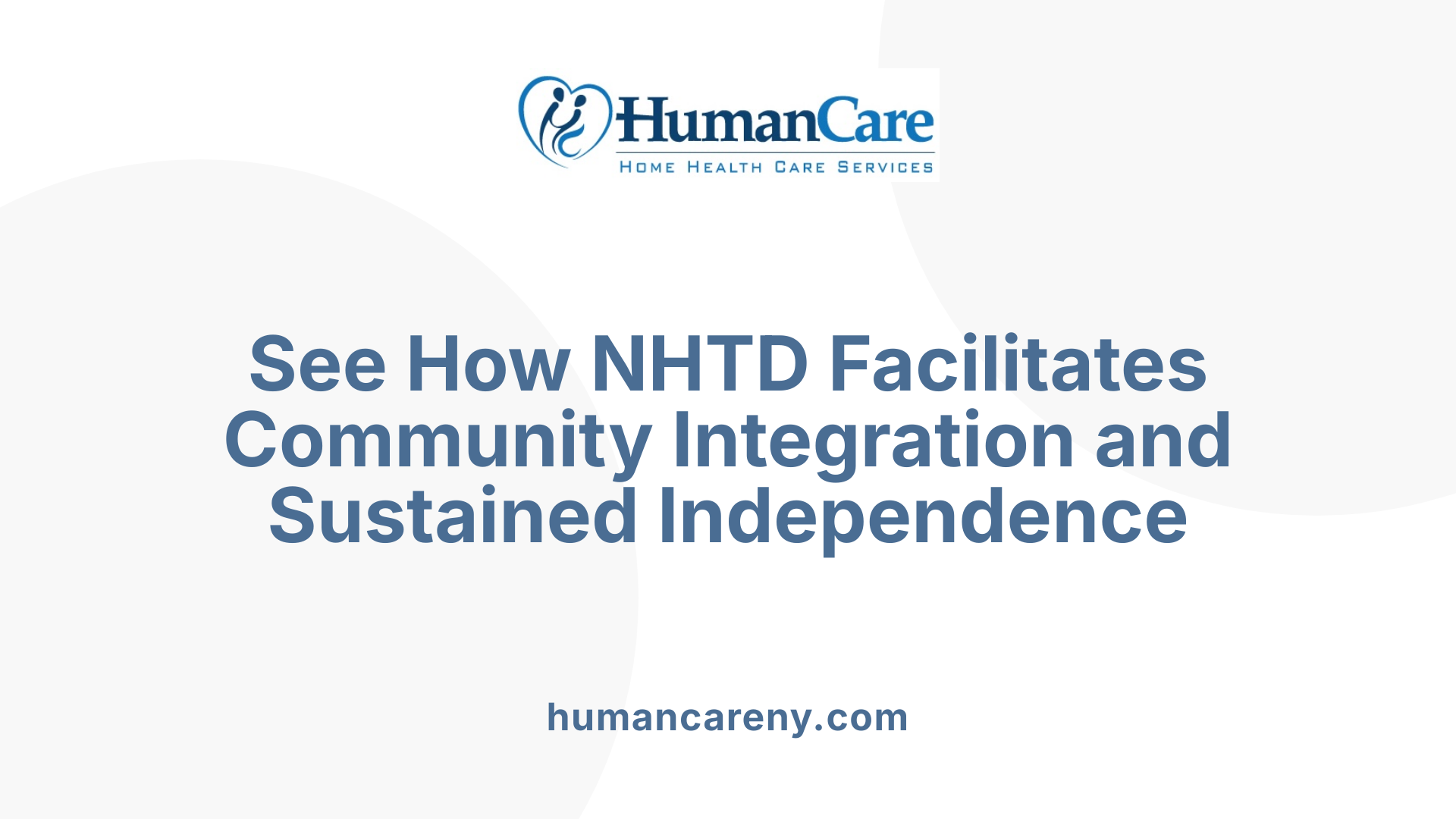
How does the NHTD program serve as a pathway to community life?
The NHTD (Nursing Home Transition and Diversion) Waiver Program is designed to help individuals move from nursing homes or long-term care facilities back into their communities. It provides a broad array of services that focus on making this transition smooth, personalized, and sustainable.
One of the program’s main features is person-centered planning. This means each participant is actively involved in developing their own care plan, ensuring their preferences, needs, and goals are central to all services provided. This approach fosters a sense of autonomy and dignity.
The program offers practical supports such as home and environmental modifications, assistive technology, and home support services—including personal care, meal preparation, and medical supplies—to help individuals live independently. Service coordination ensures that all aspects of care are synchronized and tailored to individual needs.
Community engagement is another vital aspect. Participants are encouraged to join social activities, peer mentoring programs, and community counseling. These opportunities promote social inclusion, reduce isolation, and help develop support networks within the community.
Health and wellness services, such as medical visits, nutritional counseling, behavioral supports, and therapy, are integrated to maintain overall well-being. Respite services and structured day programs further support sustained independence.
In sum, the NHTD program acts as a comprehensive pathway, enabling individuals to transition to community living confidently and securely. It ensures that each person receives the right mix of services and support to thrive outside institutional settings.
What are benefits of long-term engagement in community living?
Long-term participation in community-based programs like NHTD can offer numerous benefits. It promotes independence by providing the necessary tools, skills, and support systems to manage daily living tasks.
Social inclusion is another major advantage. Engaging actively within the community reduces feelings of loneliness and isolation, fostering a sense of belonging and purpose.
Participants often experience improved mental health and emotional well-being as a result of meaningful social interactions, supportive relationships, and personalized care.
Health outcomes also tend to improve with consistent access to medical and behavioral health services focused on prevention and management of chronic conditions.
Furthermore, community living can be more cost-effective than institutional care, reducing long-term healthcare costs while enhancing quality of life.
Finally, long-term engagement in community programs supports aging in place, allowing individuals to remain in familiar environments and maintain independence for as long as possible.
Tabular overview of NHTD components and benefits
| Service Aspect | Description | Impact on Community Living |
|---|---|---|
| Person-Centered Planning | Active involvement of individuals in designing their care | Ensures services are tailored, empowering independence |
| Home Modifications | Environment adjustments to support mobility and safety | Facilitates safe, accessible living spaces |
| Assistive Technology | Devices and tools to aid daily tasks | Promotes autonomy and ease of daily living |
| Service Coordination | Synchronization of care providers and services | Creates seamless support network |
| Community Engagement | Activities, counseling, peer support | Reduces isolation, fosters social connections |
| Health and Wellness Services | Medical, nutritional, behavioral health support | Maintains overall health, prevents avoidable hospitalizations |
| Structured Day Programs | Organized activities for skill building and engagement | Supports routine, mental stimulation |
| Benefits of Long-Term Support | Independence, social inclusion, cost-effective living | Enhances quality of life and community participation |
Through these services, the NHTD program offers a comprehensive support system that not only aids individuals in moving back into their community but also ensures they thrive there for the long term.
Conclusion: A Pathway to Empowered Independence
The NHTD Waiver Program exemplifies a comprehensive approach to supporting independent living for individuals with disabilities and seniors. Through its personalized, flexible services, strict adherence to person-centered policies, and emphasis on community integration, NHTD enables participants to live with dignity, autonomy, and active community engagement. As a bridge from institutional care to home-based, community-centered living, the program not only enhances individual quality of life but also embodies the principles of choice, respect, and independence vital for empowering those it serves.
References
- Comprehensive Guide to The NHTD Waiver Program - Americare
- Nursing Home Transition and Diversion Program (NHTD)
- Nursing Home Transition and Diversion (NHTD)
- How the NHTD Medicaid Waiver Program Helps You Stay at Home
- Community Outreach & Other Resources - Nursing Home Transition ...
- Nursing Home Transition and Diversion
- Nhtd/Tbi Program – Community - Home Care Referral Service
- Nursing Home Transition and Diversion Medicaid Waiver Program
- NHTD / TBI Programs








































































